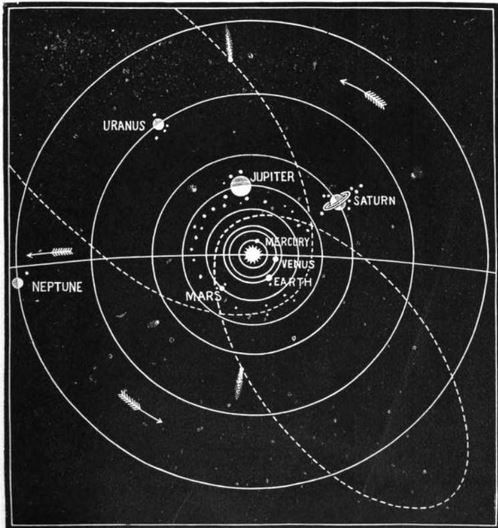 I remember it like it was more than thirty years ago. I was in sixth grade and on the bus and a friend of mine told me that very day all nine planets (at the time we still recognized Mr. Tombaugh’s discovery Pluto as a planet) were in alignment. It was staggering. I looked around wondering why everyone was so oblivious to such a monumental interplanetary event. The major bodies of our solar system were getting together and who, other than astronomers, knew when that would happen again? This should be a day set aside for recognition of universal harmony and hope for peace. At the very least we should get out of school, and not just because I had a math test that day.
I remember it like it was more than thirty years ago. I was in sixth grade and on the bus and a friend of mine told me that very day all nine planets (at the time we still recognized Mr. Tombaugh’s discovery Pluto as a planet) were in alignment. It was staggering. I looked around wondering why everyone was so oblivious to such a monumental interplanetary event. The major bodies of our solar system were getting together and who, other than astronomers, knew when that would happen again? This should be a day set aside for recognition of universal harmony and hope for peace. At the very least we should get out of school, and not just because I had a math test that day.
I have absolutely no idea where my friend was getting his information, especially since a little bit of research shows the last time such a planetary alignment occurred was 561 BC and the next time it’ll happen will be some time during 2854 AD. I’ve made a note of it in my calendar, although I’m very bad at planning ahead so I may be somewhere else on that day.
Anyway today, May 9th, 2016, an unusual celestial event really is occurring: Mercury passing between Earth and the sun. It will last seven hours and be visible to most of the planet except the quadrant of the southern hemisphere that includes everything from a part of eastern Asia down through Indonesia, the Philippines, and Australia and New Zealand. Sorry y’all.
Mercury’s year is less than three of our months—at least as long as long as two of those months are September, April, June, or November and the third is February and it’s not a leap year. This is why to Earthbound observers it sometimes looks like it’s going backward, and people thought that’s what it was doing back when they thought the Earth was the center of the universe. So Mercury is never really in retrograde and we don’t need to destroy it. Because of its small size and proximity to the sun Mercury is usually hard to spot as it stays close to the horizon but lately it’s been rising higher in the constellation Aries, although it’s still hard to spot unless it’s performing one of its transits—and there are only about thirteen every century.
In 1609 the German astronomer Johannes Kepler determined the correct orbits of the seven visible planets—William Herschel wouldn’t inspire a million jokes with his discovery of Uranus until 172 years later—and realized he’d be able to see Mercury pass in front of the Sun on November 7, 1631. Unfortunately he died in 1630—some things you just can’t plan for—but other astronomers used Kepler’s calculations and were able to observe it. At least some things in life, or at least the universe, are predictable.






At least some thing in life, or at least the universe, is predictable: I loved this post, Chris.
Experience has taught me not to try and predict what people will love and what they won’t, but reading your comments is an experience I always love.
Mercury is SUCH a deviant. Over 40 years ago, my dad bought me a telescope for my birthday–best gift ever. Although we wouldn’t have been able to look at Mercury today, we saw plenty of constellations and lunar eclipses, and it was a special thing that we did, just the two of us.
That must have been incredible. My wife got me a telescope a few years ago and I love taking it out every once in a while and looking through it. My favorite thing is seeing the rings of Saturn. I’ve also been able to spot Jupiter, Mars, Venus, and even Mercury through it.